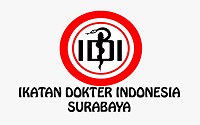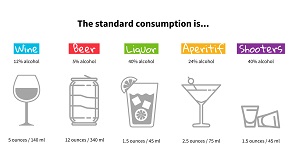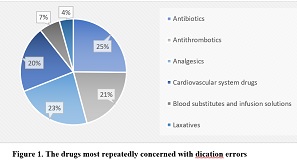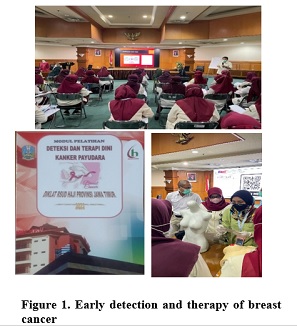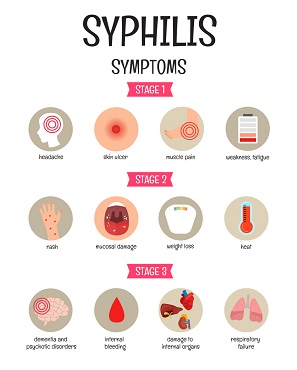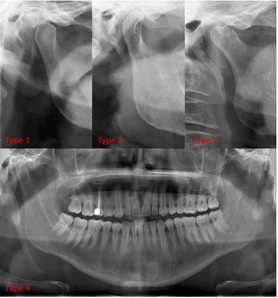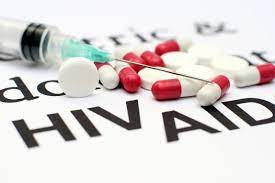How Community – Oriented Medicine is Implemented in Medical Education

The Community Oriented Medical Education (COME) approach to medical education focuses on the population and individuals while covering all elements of health problem priorities. The World Health Organization (W.H.O) Strategic Framework identifies five key strategic directions for enhancing basic medical education to meet existing health concerns. A long-term, integrated module across disciplines is one strategy that the Faculty of Medicine at Universitas Indonesia has experienced in its implementation in both community and clinical medicine. The module includes a variety of field practices (hospital and primary care) as well as inter-departmental personnel (committees and tutors). The module has bridged the gap between community medicine and clinical medicine, with integrated staff as well as collaboration between the departments of community medicine and clinical medicine. Community medicine has been seen as important not only for epidemiological concerns but also as part of the clinical teaching approach that prepares students for careers in hospitals or primary care after graduation. COME can be taught in multidisciplinary or inter-departmental collaboration to accomplish applied learning outcomes for individuals and community health activities. COME ensures our education system produces medical graduates to meet health system needs with the help of faculties and teachers who are also responsible for community health and well-being.
INTRODUCTION
A group of experts from the W.H.O Regional Office for Southeast Asia met in New Delhi in August 2009. The meeting's main goal was to examine and enhance the curricula for Prevention and Social Medicine (PSM), Community Medicine (CM), and Community Health (CH), with a focus on the common health issues and public health concerns in the region's nations. It was noted that there were already numerous effective methods for teaching the subject, but they were primarily theory-based and lacked interdepartmental connections1–3123.
The host-agent-environment, social determinants of health, blum, mandala of health, biopsychosocial model, and other models can all be used to explain the multiple factors that affect the population's health22. The population's health will impact determinants of health, hence healthcare professionals need to understand these factors in the health system4–6456. Medical professionals, who are frequently regarded as among the health system's leaders, should take the lead in reorganizing the way that healthcare is delivered7,878. To build a bridge between people and their health, medical professionals must comprehend various sociodemographic factors99.
A community leader is one of the five-star doctors by the WHO1010; therefore, community medicine is essential in medical school to build the link between population and health. Physicians must be skilled in a variety of preventive measures for individuals, families, and communities across the entire nation in addition to clinical medicine. To handle community issues and treat both illnesses and diseases, a doctor must also be aware of the roles that social and environmental factors play in determining health1111. This entire justification will affect how medical graduates behave44.
The rise in non-communicable diseases, emerging infectious diseases, the impact of climate change on health, human-caused tragedies, the aging population, population migration, and globalization are still challenges that must be overcome, including in Indonesia1212. Programs for clinical care, promotion, and prevention can address all these problems.
The need for community health intervention and medical services to complement one another to ensure continuity of care, the requirement for primary care to serve as an efficient referral backup at the secondary level1313, and the requirement for hospitals to be involved in health promotion and disease prevention by empowering patients and families are additional challenges in a health system that must be addressed1414. To address these issues, a networking and academic health system are crucial44.
There are three different levels of health systems: macro, meso, and micro1515. A macro health system is at the governance level and creates health policy, health finance systems, standards, and inter-sector coordination1616. A meso health system is at the level of a health facility and manages the flow of health services, implements evidence-based medicine, and preventive medicine, and establishes connections with community resources. A micro health system can be defined as a health facility organization in which doctors provide daily services, encompasses not just the practitioners but also patients, technologies (including information technologies, and process of care that integral to their work17,181718. Since medical school graduates will eventually be members of the micro health system (the doctor’s relationship to patients and the community), medical schools will need to strengthen the micro health system as part of their curricula to support the meso and macro health systems1818.
The W.H.O research claims that medical graduates have an inadequate understanding of the current health issues that the healthcare system is dealing with. Medical students also show little leadership or effective teamwork, and they show little enthusiasm for community or public health. Medical education curricula should pay more attention to the development of community medicine competency for their medical students to deliver preventive, promotive, curative, and rehabilitation care to address population health challenges in the local area, country, or region because doctors will practice and work within the health system4,19419.
The demand for medical graduates matches the intended quality as follows:44Be skilled in public health, can work in a multisectoral, multidisciplinary environment, effectively adapt to the ongoing changes in the health paradigm, engage in public health education and research, including training and supervising a community-based health workforce or cohort, support the operation of public health activities such as disease surveillance, engage in health activities outside the walls of the medical institution, and take a more holistic approach when dealing with clients44.
OVERVIEW
Community-Oriented Medical Education (COME) is an approach to medical education that focuses on population groupings, specific individuals, and all aspects of the importance of health problems. The goal is to create community-focused physicians who are prepared and eager to serve their local areas, deal with health issues at the primary, secondary, and tertiary levels, attend to the needs of the community, and serve HOPE (health-oriented physician education) rather than DOPE (disease-oriented physician education)20,212021.
Students are expected to mobilize, organize, and motivate the community and take part in community development initiatives as part of the goal of community-based medical education2222. They are also expected to diagnose and handle top-priority health problems at the individual, family, and community levels; promote the health system; and work well with others in a
S One. 2017 Jun 20;12(6):e0179186.
Give C, Ndima S, Steege R, Ormel H, McCollum R, Theobald S, et al. Strengthening referral systems in community health programs: a qualitative study in two rural districts of Maputo Province, Mozambique. BMC Health Serv Res. 2019 Dec 29;19(1):263.
Kumar S, Preetha G. Health promotion: An effective tool for global health. Indian Journal of Community Medicine. 2012;37(1):5.
Sawatzky R, Kwon JY, Barclay R, Chauhan C, Frank L, van den Hout WB, et al. Implications of response shift for micro-, meso-, and macro-level healthcare decision-making using results of patient-reported outcome measures. Quality of Life Research. 2021 Dec 2;30(12):3343–57.
Bodolica V, Spraggon M, Tofan G. A structuration framework for bridging the macro–micro divide in health‐care governance. Health Expectations. 2016 Aug 12;19(4):790–804.
Donaldson MS MJ. Exploring Innovation and Quality Improvement in Health Care Micro-Systems: A Cross-Case Analysis. In Washington (DC): National Academies Press (US); 2001.
Pruitt S ASJEJDJKM. Innovative Care for Chronic Conditions: Building Blocks for Action [Internet]. World Health Organization. Geneva; [cited 2023 Nov 2]. Available from: https://www.who.int/publications/i/
item/innovative-care-for-chronic-conditions-building-blocks-for-actions
Quintero GA, Vergel J, Laverde Á, Ortíz LC. Educational Strategies to Develop and Implement a Comprehensive Health Care Model Focused on Primary Care in Colombia. J Med Educ Curric Dev. 2020 Jan 26;7:238212052093026.
Hamad B. Community-Oriented Medical Education: What is it? Med Educ. 1991;16–22.
Assadi SN. Community Oriented Medical Education for Learning of Pathobiology. Health Scope. 2016 Feb 17;5(3).
Yazdani S, Heidarpoor P. Community-engaged medical education is a way to develop health promoters: A comparative study. J Educ Health Promot. 2023;12(1):93.
Densen P. Challenges and opportunities facing medical education. Trans Am Clin Climatol Assoc. 2011;122:48–58.
Majumder MdAA, Haque M, Razzaque MS. Editorial: Trends and challenges of medical education in the changing academic and public health environment of the 21st century. Front Commun (Lausanne). 2023 Mar 24;8.
Faculty of Medicine Universitas Indonesia. Teaching Guidebook of Modul Pre-Internship Year 2017/2018. Jakarta; 2017.
Medical Education Unit. Faculty of Medicine Universitas Indonesia Medical Curriculum. Jakarta; 2012.
Copyright (c) 2024 Retno Asti Werdhani, Dian Kusuma Dewi, Ardi Findyartini, Andi Ade Ramlan, Agus Sugiharto

This work is licensed under a Creative Commons Attribution-ShareAlike 4.0 International License.
- The journal allows the author to hold the copyright of the article without restrictions.
- The journal allows the author(s) to retain publishing rights without restrictions.
- The legal formal aspect of journal publication accessibility refers to Creative Commons Attribution Share-Alike (CC BY-SA).
- The Creative Commons Attribution Share-Alike (CC BY-SA) license allows re-distribution and re-use of a licensed work on the conditions that the creator is appropriately credited and that any derivative work is made available under "the same, similar or a compatible license”. Other than the conditions mentioned above, the editorial board is not responsible for copyright violation.






